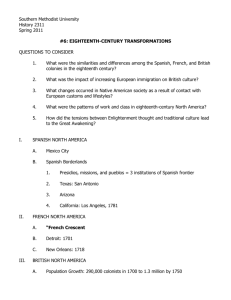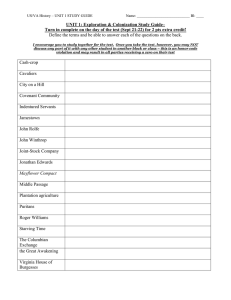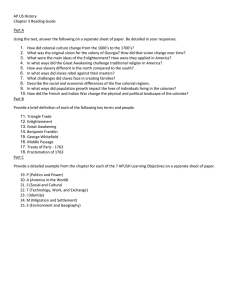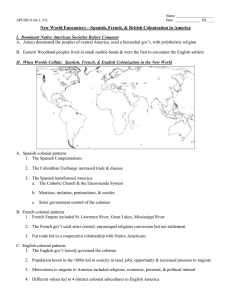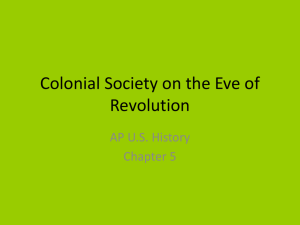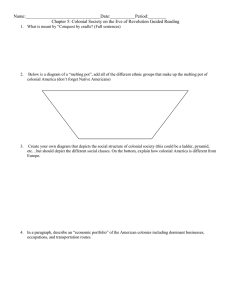18 C A
advertisement
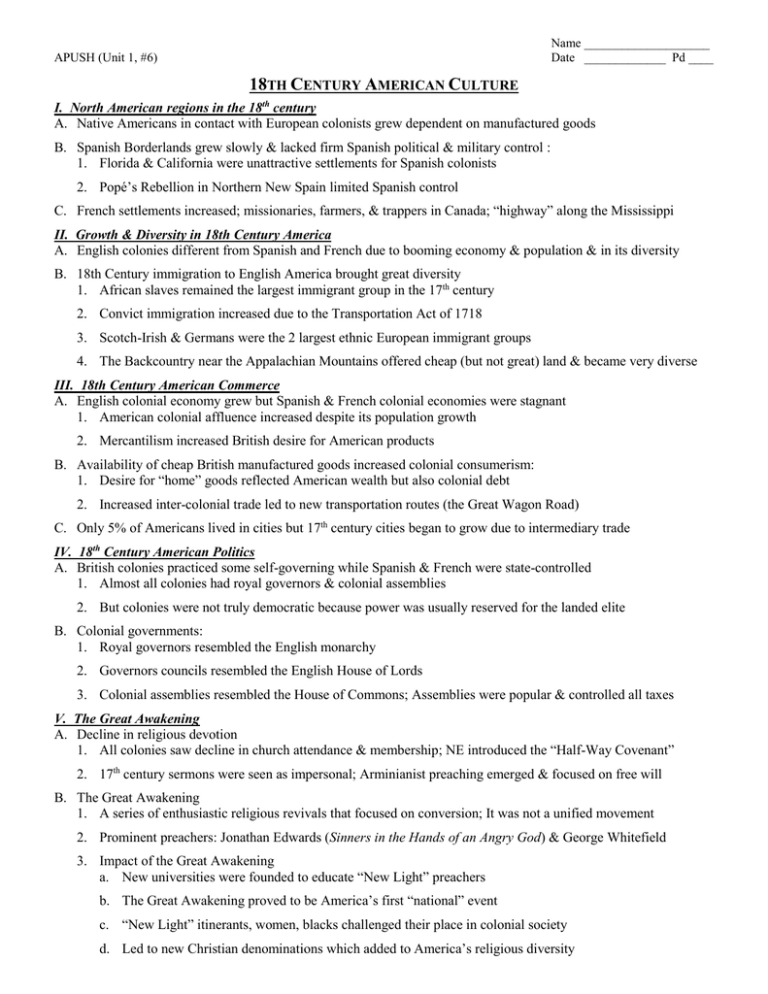
Name ____________________ Date _____________ Pd ____ APUSH (Unit 1, #6) 18TH CENTURY AMERICAN CULTURE I. North American regions in the 18th century A. Native Americans in contact with European colonists grew dependent on manufactured goods B. Spanish Borderlands grew slowly & lacked firm Spanish political & military control : 1. Florida & California were unattractive settlements for Spanish colonists 2. Popé’s Rebellion in Northern New Spain limited Spanish control C. French settlements increased; missionaries, farmers, & trappers in Canada; “highway” along the Mississippi II. Growth & Diversity in 18th Century America A. English colonies different from Spanish and French due to booming economy & population & in its diversity B. 18th Century immigration to English America brought great diversity 1. African slaves remained the largest immigrant group in the 17th century 2. Convict immigration increased due to the Transportation Act of 1718 3. Scotch-Irish & Germans were the 2 largest ethnic European immigrant groups 4. The Backcountry near the Appalachian Mountains offered cheap (but not great) land & became very diverse III. 18th Century American Commerce A. English colonial economy grew but Spanish & French colonial economies were stagnant 1. American colonial affluence increased despite its population growth 2. Mercantilism increased British desire for American products B. Availability of cheap British manufactured goods increased colonial consumerism: 1. Desire for “home” goods reflected American wealth but also colonial debt 2. Increased inter-colonial trade led to new transportation routes (the Great Wagon Road) C. Only 5% of Americans lived in cities but 17th century cities began to grow due to intermediary trade IV. 18th Century American Politics A. British colonies practiced some self-governing while Spanish & French were state-controlled 1. Almost all colonies had royal governors & colonial assemblies 2. But colonies were not truly democratic because power was usually reserved for the landed elite B. Colonial governments: 1. Royal governors resembled the English monarchy 2. Governors councils resembled the English House of Lords 3. Colonial assemblies resembled the House of Commons; Assemblies were popular & controlled all taxes V. The Great Awakening A. Decline in religious devotion 1. All colonies saw decline in church attendance & membership; NE introduced the “Half-Way Covenant” 2. 17th century sermons were seen as impersonal; Arminianist preaching emerged & focused on free will B. The Great Awakening 1. A series of enthusiastic religious revivals that focused on conversion; It was not a unified movement 2. Prominent preachers: Jonathan Edwards (Sinners in the Hands of an Angry God) & George Whitefield 3. Impact of the Great Awakening a. New universities were founded to educate “New Light” preachers b. The Great Awakening proved to be America’s first “national” event c. “New Light” itinerants, women, blacks challenged their place in colonial society d. Led to new Christian denominations which added to America’s religious diversity From Authority to Individualism: Puritanism, Great Awakening, & the Enlightenment Puritan Concept of God Individual’s Reason for Existence Individual’s Relationship to the Church Need for Education Individual’s Role in the Government Individual’s Responsibility for Improving Society Great Awakening Enlightenment
